- Home
- Dean Koontz
The Book of Counted Sorrows
The Book of Counted Sorrows Read online
Original scan and conversion by
LC and CallerX
~ ~ ~
October 2001
This is a complete and original
scan and conversion from the
original digital ebook.
Remember:
If you enjoy it... buy it!
The Book of Counted Sorrows
Otherwise Known As:
The Book of Counted Sorrows
Being the Mind-Bending,
Heart-Stopping, Bowel-Freezing,
Spleen-Tickling History of the Most
Dangerous Book of Poetry Ever
Written, Including the Text of That
Cursed Book Itself, With the Prayer
that God Will Protect You from a
Spontaneous Head Explosion
(and Even Worse Potential Fates)
If You Dare Read It.
Introduction (c) 2001 by Dean Koontz
Poetry (c) 1981, 1982, 1983, 1984, 1985, 1986, 1987, 1988, 1989, 1990, 1991,
1992, 1993, 1994, 1995, 1996, 1997 by Nkui, Inc.
Poetry (c) 1994, 1995, 1996, 1997, 1998, 1999, 2000, 2001 by Dean Koontz.
Cover design (c) 2001 by Ray Downing
This edition published by Barnes & Noble Digital, by arrangement with Dean
Koontz
All rights reserved. No part of this book may be used or reproduced in any
manner whatsoever without the written permission of the Publisher.
2001 Barnes & Noble Digital
ISBN 1-4014-0022-1
Dedication
To all the readers who have written to me over the years, demanding
this book. Without You, it would never have been written. If Hell
exists, perhaps all of you should be worried.
Table of Contents
For the Introduction
The Dark, Peculiar, Mysterious and Ultimately Incomprehensible
History Of the Volume in Question.
1. Before the Glass of Sherry.
2. After the Glass of Sherry.
3. The Hideous Fate of Langford Crispin.
4. The Hideous Fate of Langford Crispin, Resumed.
5. The Hideous Fate of Langford Crispin, For Real This Time.
6. The Curse of Too Much Knowledge and a Trail of Frightful Destruction.
7. Bruno Kronk, Masseur Extraordinaire and Monkey Mechanic.
8. Everything Additional That I Know About The Cursed Book.
And Now the Text of the Cursed Book...
The Book of Counted Sorrows
Being the Mind-Bending,
Heart-Stopping, Bowel-Freezing,
Spleen-Tickling History of the Most
Dangerous Book of Poetry Ever
Written, Including the Text of That
Cursed Book Itself, With the Prayer
that God Will Protect You from a
Spontaneous Head Explosion
(and Even Worse Potential Fates)
If You Dare Read It.
By
Dean Koontz
The Dark, Peculiar,
Mysterious, And Ultimately
Incomprehensible History Of
The Volume In Question.
1
Before the Glass of Sherry.
In 1981, I began citing lines of verse from The Book of Counted Sorrows as epigraphs at the beginnings - and occasionally at the part divisions - of some of my novels. Little more than a decade later, mail from readers, specifically inquiring about this exotic volume of poetry, had risen to 3,000 letters a year.
Dealing with these earnest but exhaustingly repetitious inquiries became so annoying to one of my assistants - Basil Keenly - that he gave up his lifelong dream of serving as a novelist's right-hand man, signed up for a series of university courses toward a new career in body waxing, subsequently worked as a customized-cake salesman (your face or favorite body part realistically rendered in exquisitely subtle shades of icing), briefly returned to personal-assistant work as the right hand to Porky Pig, but was dispirited by the endless jokes about stuttering and ham that came with the job, attempted to hold up a 7-Eleven with a lump of cake cunningly decorated to resemble a handgun, and eventually took a leave from the secular world by joining a tiny and somewhat curious religious community that worships squirrels. Tragically, while working with other cultists in urgent preparation for a hard winter, he was crushed when the community hoard suddenly shifted, burying him under millions of acorns, walnuts, and dried legumes.
I miss him.
We all miss him here at the Koontz manor.
Well, not Mrs. Scuttlesby, whose standards of excellence are so high and whose commitment to her work is so complete and unrelenting that she feels nothing but contempt, and rightly so, for the rest of us engaged in this enterprise. She said good riddance to Basil when he left our employment, as she says good riddance to all, as she says good riddance to me and my wife each time that we depart on a brief holiday, and when she received the news of Basil's death, she shed not a tear, but said only, "This is precisely the end I expected he would meet.
In the receiving room, on the north wall, which we call the Wall of Honorable Service, dear Basil's photograph is handsomely framed and hung among the equally handsomely framed photographs of other former members of our staff who have performed their duties with exceptional ability and conducted themselves with moral probity, with great courage, and with no fear whatsoever of the words "Girl Scout Cookie sale," in even the most difficult times. Some of these much missed employees have moved on to enjoy stellar careers assisting far more luminous literary figures than I: Among the most notable of their new employers have been Nobel-nominated novelist William Shatner, self-help guru Caesar Zedd, and the anonymous copywriter of the Calvin Klein advertisements; indeed, our very special Emily Vlick, who was with us seven years, accepted a position with the late V.C. Andrews, who has produced more novels following her demise than she did during her lifetime. Other beloved employees have left our service due to fork-lift accidents, alien abductions, non-cancerous but weird chin tumors the size of pumpkins, incurable addictions to Spam, and, of course, due to that greatest of all impediments to the maintenance of a full and happy staff - death.
I am deeply pained to recall how some of our most cherished and enormously missed employees perished, but I have committed myself to revealing the inside story, the unvarnished truth, and the full poop about Counted Sorrows; consequently, it seems to me that I absolutely must relate to you how these adored and grievously missed staffers died, although at the moment I see no connection whatsoever between the circumstances of their deaths and this book. Perhaps we will achieve enlightenment together. One died in a cataclysmic rickshaw collision, two in separate incidents of spontaneous human combustion, one while spiritedly arguing the fine points of creative napkin-folding with Martha Stewart, one in a gorilla suit that had been manufactured from toxic fabric, and three in the panic and turmoil that arose at a Dali Lama look-alike contest. One died by flaming arrow, one by the excess fizz in an irresponsibly over-carbonated sparkling beverage, one by catapult, two by parakeet. Two bought the farm when they fell off the high wire at a circus while tap dancing to "Mr. Bojangles," and another bought the farm after literally buying a farm, only to discover too late that the cows that came with that particular property were ill-mannered and vindictive. And Basil, of course, pinned beneath a deadly weight of assorted nuts.
This recitation of misfortune has left me unable to go on. I must pause to brood on the fragility of life, on our powerlessness in the face of great cosmic forces, and on the meaning of these untimely deaths, not one of which occurred precisely on the hour, on the half hour, or even on the quarter hour, but
always at odd minutes.
Fortunately, a glass of fine sherry has appeared at my side as if by magic, offering me the consolation of its nutty flavor and alcoholic content. Although lacking any corroborating evidence, I am morally certain that the sherry placed on the table beside my armchair was put there by Mrs. Scuttlesby, whose sense of what is required at any given moment is so uncanny as to suggest divine omniscience, although serving sherry is not, as far as I am mare, any more a part of her job description than crocodile wrestling, at which she is also more than merely proficient.
Now I shall raise a sherry to toast the dear departed, brood deeply as we novelists are frequently wont to do, and continue with the story of Counted Sorrows once I have come to terms with all these losses and with the madness of existence.
Cheers.
2
After the Glass of Sherry.
Where was I?
Oh, yes, we are at Basil Keenly's handsomely framed photograph on the Wall of Honorable Service in the receiving room of the Koontz manor. Under this long row of former employees' photos stands an equally long and richly carved rosewood altar table: Chinese, from the Tang Dynasty. Neither the table's country of origin nor its period have any significance, as relates to the photographs. We just think it looks pretty here.
From time to time, on the table, under the various photographs, members of our family, many friends, and our surviving employees -once, even a burglar - place items in memory of those who have passed on to other employment or who have simply passed on. Flowers are popular memorial leavings. Ribbons, candles, inexpensive jewelry, sticks of chewing gum, and on-the-anniversary-of-your-death greeting cards. Under Basil Keenly's photo, one often sees acorns, walnuts, and dried legumes, quiet and touching reminders that he died in the practice of his faith. A few times, road-kill squirrels have been left for him - and once a rabbit, offered by the same type of well-intentioned but ignorant person who might mistake a High Episcopalian for a Catholic; discreetly, but with characteristic efficiency, Mrs. Scuttlesby removed the rabbit minutes after it was deposited, whereas our practice is to leave the squirrels on display for twenty-four hours.
Librarians in particular, when visiting the Koontz manor as invited guests or as members of a tour group, or in kamikaze assaults in the black of night, inevitably gravitate toward Basil's photo on the Wall of Honorable Service. Basil, you surely remember - unless you have guzzled two sherries while I enjoyed a single serving - was at one time responsible for answering reader inquiries about The Book of Counted Sorrows. (You knew we'd come back to that eventually.) Among those 3,000 letters a year, a few hundred were from librarians, who had often spent ten or twenty hours - or, in the case of several dangerously obsessive types, even a hundred or two hundred hours - searching for this rare book without success, at the request of their patrons. In his inimitable and gracious way, Basil explained to each that (1) Counted Sorrows is the rarest book on the planet, with only one known copy extant, (2) this copy is in our possession, (3) we decline to lend it or to photocopy it, and (4) in any event, it is inadvisable for anyone to read the entire contents of the book, because everyone who absorbs every word of the text is driven mad by the terrible burden of the knowledge thus acquired - or he explodes.
Legend warns of this dire curse, and our distressing personal experience confirms it. One of our esteemed and adored employees, Thelma Kickmule, as rock-ribbed and tough-minded an individual as you will find this side of the Marine Corps, read Counted Sorrows from first word to last, certain it would not affect her, and within nine minutes of closing the volume, she became convinced that she was a chicken. No amount of therapy, drugs, or slaps upside the head could dissuade her from this new perception of herself. Thelma now lives in a coop in Iowa, where she is shunned as the "Featherless Hen" by other residents and mercilessly threatened by the farmer who resents that she consumes so much grain without producing a single egg.
Anyway, with fond memories of the charming correspondence they so much enjoyed with Basil Keenly, every librarian is drawn to his photo. Perhaps moved by his handsome face and by the thought that he was called from this world at such a young age, Basil's librarian friends evidently kiss his portrait, for after a group of them has passed the Wall of Honorable Service, the glass over his image and the frame around it are literally glistening with saliva.
The high point of every tour of the Koontz manor, especially for librarians, is a walk across the Bridge of Nails, through the Curtain Devouring Fire, along the Tunnel of Deadly Spring-Loaded Spears, to the Great Vault of Unimaginable Torment, where The Bask of Counted Sorrows is kept on display in a case ten-inch-thick, bomb-proof glass. Flanking the display are supernaturally alert and lightning-quick Ninja assassins. Flanking the Ninjas are seven-foot-tall, massively muscled guards so pumped full of steroids that their livers are bigger than basketballs. Flanking the guards are genetically engineered, two-hundred-pound pit bulls trained to kill any visitor who matches at least seven of ten indicators on the FBI's standard psychological profile of a typical rare-book thief. Having been drilled in those ten indicators by the finest dog trainers in the world, the pit bulls cannot be easily deceived - although a dried dribble of gravy on a visitor's neck tie or sweater is also likely to instigate horrendous violence. Finally, flanking the pit bulls are attorneys who insist that each visitor sign and have witnessed, on the spot, a statement to the effect that he or she swears that he or she has no intention of committing an act of larceny while in the Great Vault of Unimaginable Torment and will not attempt to damage, deface, dog-ear any page of, or lick The Book of Counted Sorrows.
Librarians, a dangerous and fearless lot, have not a1ways been deterred by the Ninjas, the steroid-pumped guards, the pit bulls, and the bomb-proof glass. Because of their respect for the written word, however, every last one of them, at least thus far, has been deterred from reckless action by the document of forswearance presented by the attorney. As an extra precaution, to encourage the expression of their basic genteel nature, we serve scones and Robertson's lemon marmalade immediately upon entering the Vault, as well as tea laced with Prozac.
What the librarians see beyond the thick, impurity-free glass is a slim leather-bound book with a sewn-in ribbon page marker. The same thing is seen, of course, by visitors who are not librarians, which includes but is not limited to teachers, bankers, stevedores, peg-legged pirates, pirates without handicaps, butchers, bakers, candlestick makers, software designers, politicians, obstetricians, mathematicians, electricians, professional underwear models, nuclear physicists, artists, car-wash guys, the odd people who design and manufacture those tacky musical toilet paper dispensers, clergymen, grocers, carpenters, worm farmers, hat designers, hat makers, hat blockers, hat dealers, hat critics, post-market hat customizers, clowns, mimes, peanut vendors, private detectives, successful thugs involved in every aspect of criminal enterprise, dentists, dessert chefs, specialty plumbers, mink ranchers, mink gutters, mink sinners, mink-rights activists (that was a bad day on the tour), florists, film-makers, show girls, phlegm analysts, painters of elaborate scenes on collectible thimbles, hair salesmen, and any number of wealthy snots who haven't done anything all their lives except live off the money earned by their parents.
The binding of the book is enhanced with a geometric Art Deco design crafted with inlays of leather in blue, black, green, and a fourth color for which no one has managed to find a name. Although the volume bears a copyright date Of 1928, the slightly creamy off-white paper has suffered no yellowing in all this time, and it has an exceptionally soft smooth finish equal to the flawless skin of a king's concubine, supposing that kings in these classless times still possessed the discretion and good sense to keep concubines instead of chasing off after girl pop singers of dubious talent and topless lap dancers, as does every common gink in the kingdom. In spite of its age, the book is as pristine as any tome just off a printing press, with no smudges or spots, no creases or soiling - with the sole exception of the dried maroon smear of
blood on page 22, which recent DNA tests have proven to be extraterrestrial in origin.
The name of the publisher is Inevitable Doom Press, of which no record exists in any country on the face of the earth, although there was an Inevitable Doom Soup Company operating out of Cleveland in the 1950s and '60s. Inevitable Doom Soup was a thriving business with ninety-six varieties of soup, consommé, and chili con carne. In 1968, several cans of their Crunchy Bean Chili with Goat Meat, contaminated by botulism, left nineteen customers indisputably dead and resulted in the bankruptcy of the firm following successful legal actions brought by families of the victims. More than a few in the media and in the hotly competitive soup industry noted a certain irony in the company's name, in light of the Crunchy Bean tragedy. Fate is funny. Personally, I would feel uncomfortable eating any product produced by an enterprise calling itself the Inevitable Doom Soup Company, though I will admit to being a finicky eater. Not that I am entirely lacking in culinary adventurousness; I would, for instance, have no problem eating any product whatsoever produced by an entity calling itself the Possible Doom Soup Company.
Where was I?
Oh, yes: I was telling you what little is known about the mysterious publisher of The Book of Counted Sorrows. Inevitable Doom Press never produced another book (or any soups, for that matter), never paid taxes, never sued or was itself sued in a court of law. The publisher's colophon, which appears at the bottom of the title page and at the top of the copyright page, is an image of a startled hedgehog.
The book is copyright 1928 by one "Leonardo DiCaprio," but this certainly cannot be the acclaimed star of James Cameron's Titanic, because that Leonardo DiCaprio had not been born in 1928, but also because the actor does not make a practice of bracketing his name with quotation marks as does the "Leonardo Di Caprio" who holds the copyright on Counted Sorrows. Since this mysterious volume first came into my possession, in 1980, I have hired a series of private detectives in a thus far vain attempt to learn just one telling fact about "Leonardo DiCaprio," and in pursuit of this enigmatic figure I have spent a sum of money that, were I to cite it here, would make you vomit. Considering my abject failure to sweep up even a single crumb of knowledge about "Leonardo DiCaprio," the book might as well have been copyright by " ".

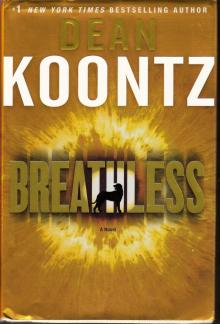 Breathless
Breathless Lightning
Lightning The Taking
The Taking The Door to December
The Door to December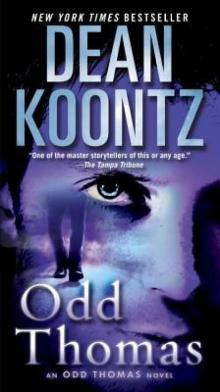 Odd Thomas
Odd Thomas Midnight
Midnight Whispers
Whispers Odd Interlude #2
Odd Interlude #2 The Mask
The Mask Watchers
Watchers By the Light of the Moon
By the Light of the Moon Night Chills
Night Chills Brother Odd
Brother Odd False Memory
False Memory The Darkest Evening of the Year
The Darkest Evening of the Year Life Expectancy
Life Expectancy The Good Guy
The Good Guy Hideaway
Hideaway Innocence
Innocence Your Heart Belongs to Me
Your Heart Belongs to Me Forever Odd
Forever Odd Intensity
Intensity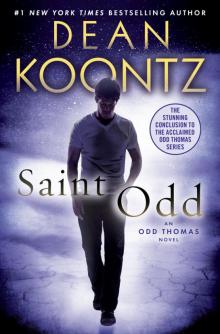 Saint Odd
Saint Odd Dragon Tears
Dragon Tears The Husband
The Husband Final Hour
Final Hour Demon Seed
Demon Seed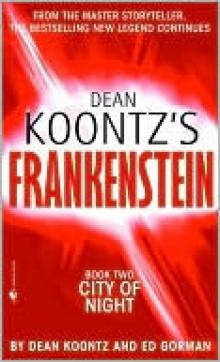 City of Night
City of Night From the Corner of His Eye
From the Corner of His Eye A Big Little Life: A Memoir of a Joyful Dog
A Big Little Life: A Memoir of a Joyful Dog Seize the Night
Seize the Night Winter Moon
Winter Moon Strange Highways
Strange Highways The Silent Corner
The Silent Corner Twilight Eyes
Twilight Eyes Velocity
Velocity The Bad Place
The Bad Place Cold Fire
Cold Fire The Whispering Room
The Whispering Room Ricochet Joe
Ricochet Joe The Crooked Staircase
The Crooked Staircase Tick Tock
Tick Tock The Face
The Face Sole Survivor
Sole Survivor Strangers
Strangers Deeply Odd
Deeply Odd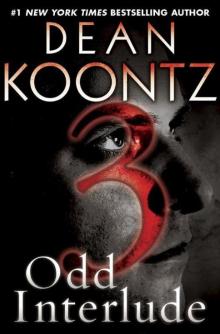 Odd Interlude #3
Odd Interlude #3 The Vision
The Vision Phantoms
Phantoms Prodigal Son
Prodigal Son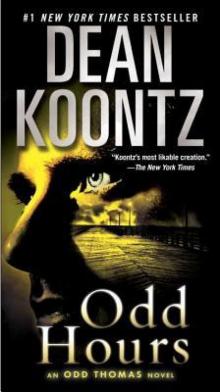 Odd Hours
Odd Hours Last Light
Last Light Fear Nothing
Fear Nothing Odd Interlude #1
Odd Interlude #1 One Door Away From Heaven
One Door Away From Heaven Koontz, Dean R. - Mr. Murder
Koontz, Dean R. - Mr. Murder The City
The City The Dead Town
The Dead Town The Voice of the Night
The Voice of the Night Dark Rivers of the Heart
Dark Rivers of the Heart The Key to Midnight
The Key to Midnight Lost Souls
Lost Souls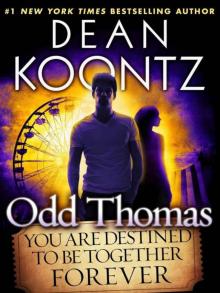 Odd Thomas: You Are Destined To Be Together Forever
Odd Thomas: You Are Destined To Be Together Forever Odd Apocalypse
Odd Apocalypse Icebound
Icebound The Book of Counted Sorrows
The Book of Counted Sorrows The Neighbor
The Neighbor Ashley Bell
Ashley Bell Santa's Twin
Santa's Twin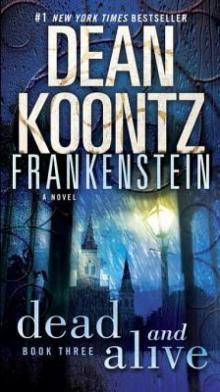 Dead and Alive
Dead and Alive The Eyes of Darkness
The Eyes of Darkness The Odd Thomas Series 4-Book Bundle
The Odd Thomas Series 4-Book Bundle Writing Popular Fiction
Writing Popular Fiction City of Night f-2
City of Night f-2 Dean Koontz's Frankenstein 4-Book Bundle
Dean Koontz's Frankenstein 4-Book Bundle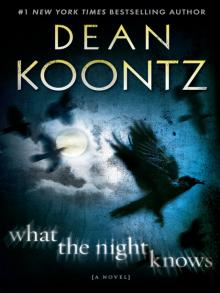 What the Night Knows: A Novel
What the Night Knows: A Novel Demon Child
Demon Child Starblood
Starblood Surrounded mt-2
Surrounded mt-2 Odd Interlude #3 (An Odd Thomas Story)
Odd Interlude #3 (An Odd Thomas Story)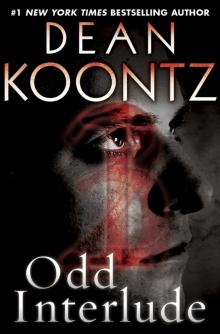 Odd Interlude
Odd Interlude The Odd Thomas Series 7-Book Bundle
The Odd Thomas Series 7-Book Bundle The City: A Novel
The City: A Novel Deeply Odd ot-7
Deeply Odd ot-7 Odd Interlude #1 (An Odd Thomas Story)
Odd Interlude #1 (An Odd Thomas Story) The House of Thunder
The House of Thunder Odd Interlude ot-5
Odd Interlude ot-5 Fear That Man
Fear That Man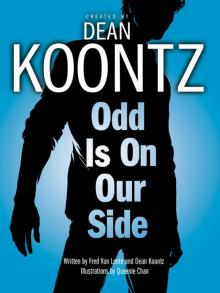 Odd Is on Our Side
Odd Is on Our Side Relentless
Relentless A Big Little Life
A Big Little Life Hanging On
Hanging On The Forbidden Door
The Forbidden Door Dragonfly
Dragonfly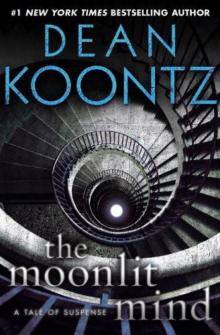 The Moonlit Mind: A Tale of Suspense
The Moonlit Mind: A Tale of Suspense Final Hour (Novella)
Final Hour (Novella) The Odd Thomas Series 4-Book Bundle: Odd Thomas, Forever Odd, Brother Odd, Odd Hours
The Odd Thomas Series 4-Book Bundle: Odd Thomas, Forever Odd, Brother Odd, Odd Hours Odd Interlude (Complete)
Odd Interlude (Complete)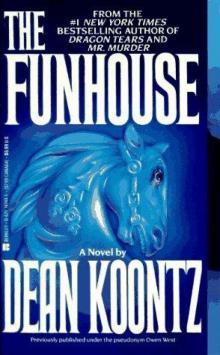 The Funhouse
The Funhouse 77 Shadow Street
77 Shadow Street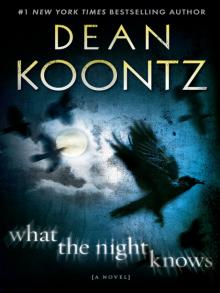 What the Night Knows
What the Night Knows Deeply Odd: An Odd Thomas Novel
Deeply Odd: An Odd Thomas Novel The Servants of Twilight
The Servants of Twilight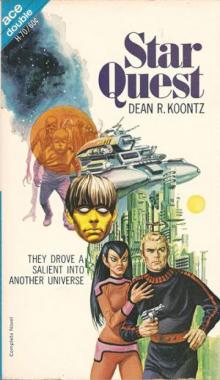 Star quest
Star quest Frankenstein Dead and Alive: A Novel
Frankenstein Dead and Alive: A Novel Chase
Chase Eyes of Darkness
Eyes of Darkness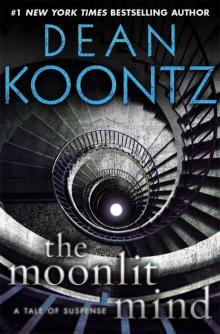 The Moonlit Mind: A Tale of Suspense (Kindle Single)
The Moonlit Mind: A Tale of Suspense (Kindle Single) Sussurri
Sussurri The Moonlit Mind (Novella)
The Moonlit Mind (Novella) Frankenstein: Lost Souls - A Novel
Frankenstein: Lost Souls - A Novel![Ricochet Joe [Kindle in Motion] (Kindle Single) Read online](http://i1.bookreadfree.com/i2/04/05/ricochet_joe_kindle_in_motion_kindle_single_preview.jpg) Ricochet Joe [Kindle in Motion] (Kindle Single)
Ricochet Joe [Kindle in Motion] (Kindle Single) Innocence: A Novel
Innocence: A Novel Beastchild
Beastchild A Darkness in My Soul
A Darkness in My Soul Oddkins: A Fable for All Ages
Oddkins: A Fable for All Ages The Frankenstein Series 5-Book Bundle
The Frankenstein Series 5-Book Bundle Frankenstein - City of Night
Frankenstein - City of Night Shadowfires
Shadowfires Last Light (Novella)
Last Light (Novella) Frankenstein - Prodigal Son
Frankenstein - Prodigal Son Ticktock
Ticktock Dance with the Devil
Dance with the Devil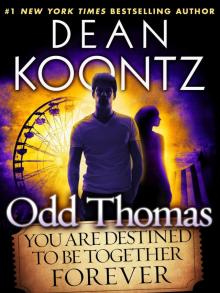 You Are Destined to Be Together Forever (Short Story)
You Are Destined to Be Together Forever (Short Story) The Moonlit Mind (Novella): A Tale of Suspense
The Moonlit Mind (Novella): A Tale of Suspense Darkness Under the Sun
Darkness Under the Sun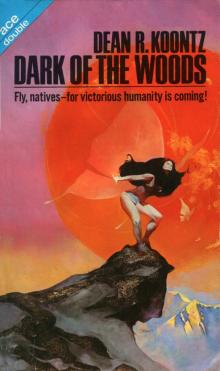 Dark Of The Woods
Dark Of The Woods Dean Koontz's Frankenstein
Dean Koontz's Frankenstein Frankenstein
Frankenstein The Face of Fear
The Face of Fear Children of the Storm
Children of the Storm Mr. Murder
Mr. Murder